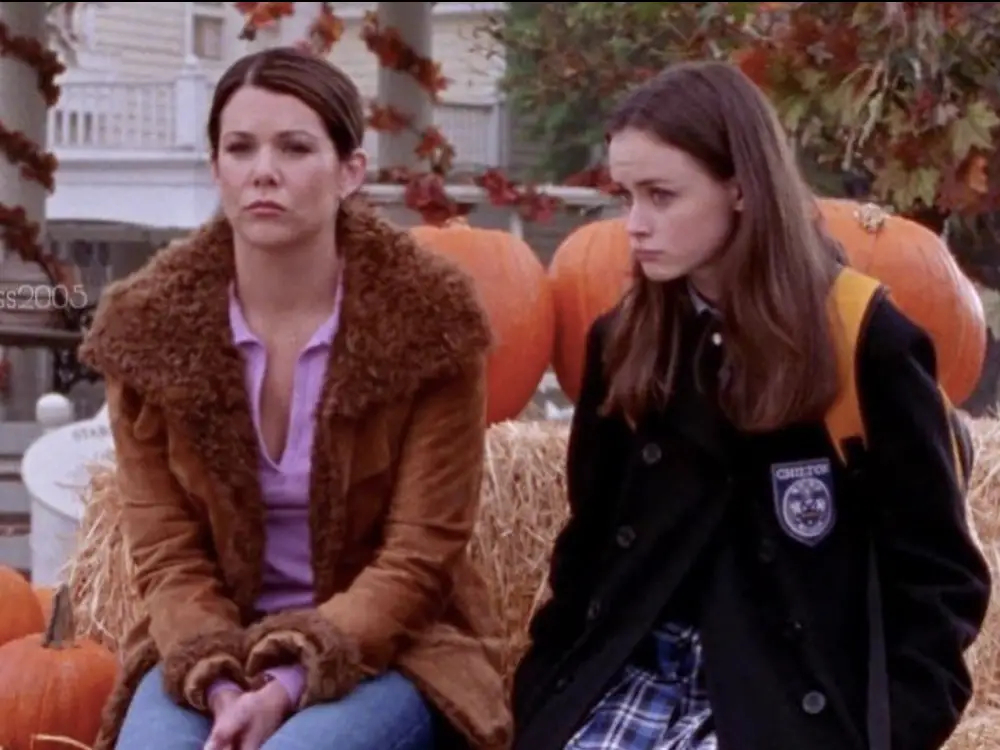The hit television show “Gilmore Girls” first aired on October 2000, and continued to be popular for years after its conclusion in May 2007. The show follows single mother Lorelai Gilmore and her daughter Rory as they navigate life in the fictional small town of Stars Hollow, Connecticut. However, the show isn’t as realistic as it appears to be — ultimately, it plays into the storybook fantasy small town stereotype. Nothing seems to go wrong in the “Gilmore Girls” world, and when there is an incident, it appears to be comedic rather than serious.
What makes Stars Hollow fit the “storybook” setting is the fact that everyone knows each other and seems to be friends. In the first episode alone, viewers see Lorelai interacting with both the local diner owner and her next-door neighbor as if they’ve been best friends their whole lives. These exchanges are based on the whole small town gossip stereotype; the whole point of Stars Hollow is that it’s an isolated community hidden away from the rest of Connecticut and tourists are nonexistent.
“Gilmore Girls” plays into more than just the perfect small-town trope. In the pilot episode alone, two more common ones appear. The first is the (totally false) idea that all girls who attend public school care more about appearances than academics. In the scene where Rory attends her last day at Stars Hollow High School after receiving the letter that she was accepted into Chilton, a fancy private school, two of her classmates can be seen painting their nails instead of working on the assignment. One of them looks at Rory’s desk and says, “Oh, it’s the assignment,” as if she’s disappointed in Rory for following the rules. What’s important to note is that the writers of the show are not actually promoting or encouraging this sort of behavior. Instead, they play it up for comedic effect.
A lot of the stereotypes “Gilmore Girls” incorporates are played up for comedic effect, including the show’s portrayal of high society seen with Lorelai’s estranged parents, Emily and Richard Gilmore. The depiction of these characters, although not intended to be offensive, promotes the entirely false notion that all wealthy people are cold, distant and condescending toward those with a lower standard of life. However, portraying Emily and Richard in this manner drives the plot of the show forward by providing a recurring source of conflict. If Emily and Richard supported Lorelai’s lifestyle, a lot of the show wouldn’t exist, as this subplot occurs throughout all seven seasons.
This exaggerated depiction of wealthy Hartford society provides a contrast between Stars Hollow and the rest of the state. The supposed isolation of Stars Hollow makes it appear more like an exclusive community rather than a town, as evidenced by the fact that it rarely gets new residents. When it does, everyone makes a huge deal about it.
What makes Stars Hollow so different from Hartford is that all the citizens seem happy with what they have. A prime example of this is the character Luke Danes, the diner owner who is perfectly content living in a tiny apartment over his business and doesn’t ever plan on venturing outside Stars Hollow. He and Lorelai are close friends and eventually end up dating. These two become a good pair because they both dedicate their lives to Stars Hollow, which is something all the main characters seem to do. There is even a point in Season 6 when Lorelai says she doesn’t want to live in a house outside the city limits, and in multiple seasons Luke says he’s against expanding his business because that would mean commuting to a location outside Stars Hollow.
Because “Gilmore Girls” focuses on a storybook small town where everything seems to go according to plan, it becomes a good escape from reality. The comedic portrayal of those who aren’t Stars Hollow residents contributes to this by allowing viewers to really see the contrast between the town and the surrounding area. In a way, the attention to detail the show’s writers give to daily life in Stars Hollow makes viewers feel like they are actually there for the duration of the 45-minute episode.
All seven seasons of “Gilmore Girls” are currently available to stream on Netflix, along with the 2016 revival series titled “Gilmore Girls: A Year in the Life.”
















